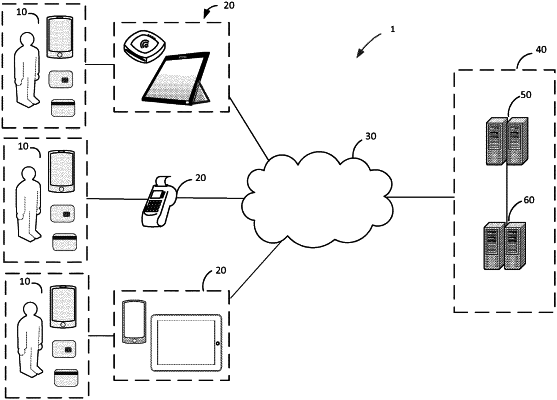| CPC G06Q 20/3278 (2013.01) [G06Q 20/20 (2013.01); G06Q 20/227 (2013.01); G06Q 20/4014 (2013.01); H04W 76/10 (2018.02)] | 21 Claims |

|
1. A method for a payment reader to process payment transactions, the method comprising:
communicating, by the payment reader, with a plurality of payment devices via near field communication (NFC) for receiving payment information;
processing, by the payment reader, a plurality of payment transactions based on the payment information;
receiving, by the payment reader from a payment device via NFC, a first message complying with a standard payment protocol via a wireless communication connection established by inductive coupling when the payment device is placed within range of the payment reader, the first message being communicated via a first communication thread and including a request to process a payment transaction, the request being associated with a standard payment card account, wherein the payment device is one of a payment card or a mobile device;
receiving, by the payment reader from the payment device via NFC via the wireless communication connection, a second message that does not comply with a standard payment protocol, the second message being communicated via a second communication thread separate from the first communication thread and including a list of one or more payment card types that do not comply with the standard payment protocol;
identifying, by the payment reader, from the list of one or more payment card types, a payment card account that does not comply with the standard payment protocol;
providing, from the payment reader to a first remote server via one or more communications complying with a payment information standard, information for authorizing payment of a first portion of the payment transaction based on the standard payment card account;
providing, from the payment reader to a second remote server via one or more protocol communications that do not comply with the payment information standard, information for authorizing payment of a second portion of the payment transaction based on the identified payment card account;
receiving, by the payment reader from the first remote server, approval of payment of the first portion of the payment transaction based on the standard payment card account; and
receiving, by the payment reader from the second remote server, approval of payment of the second portion of the payment transaction based on the identified payment card account.
|